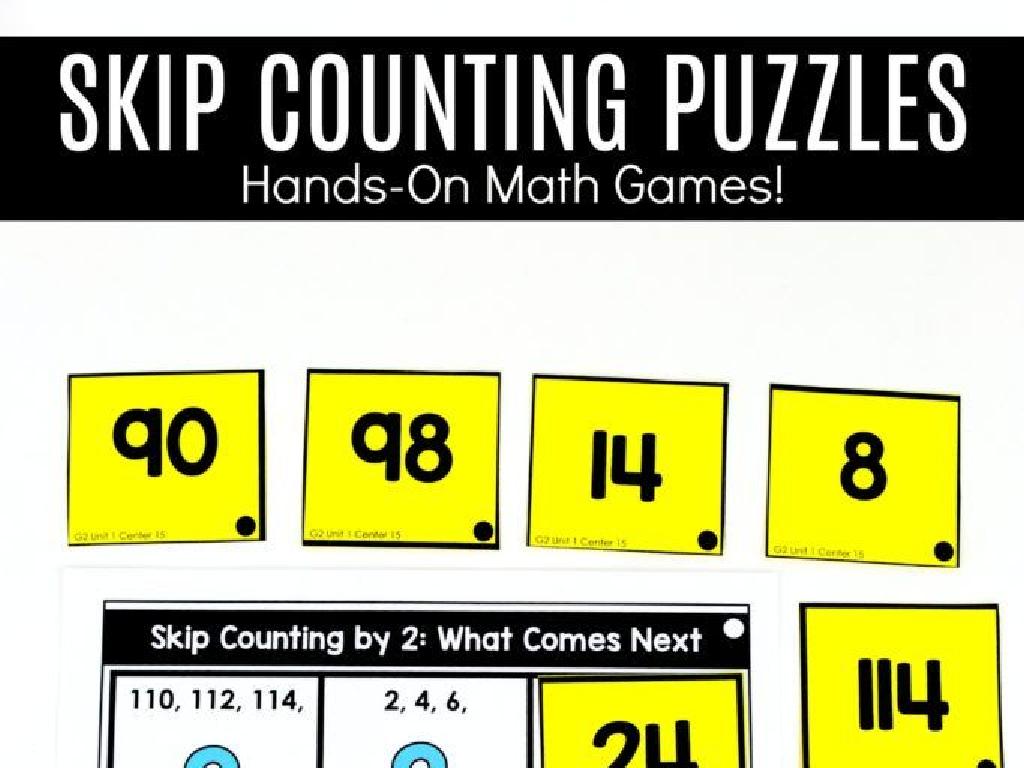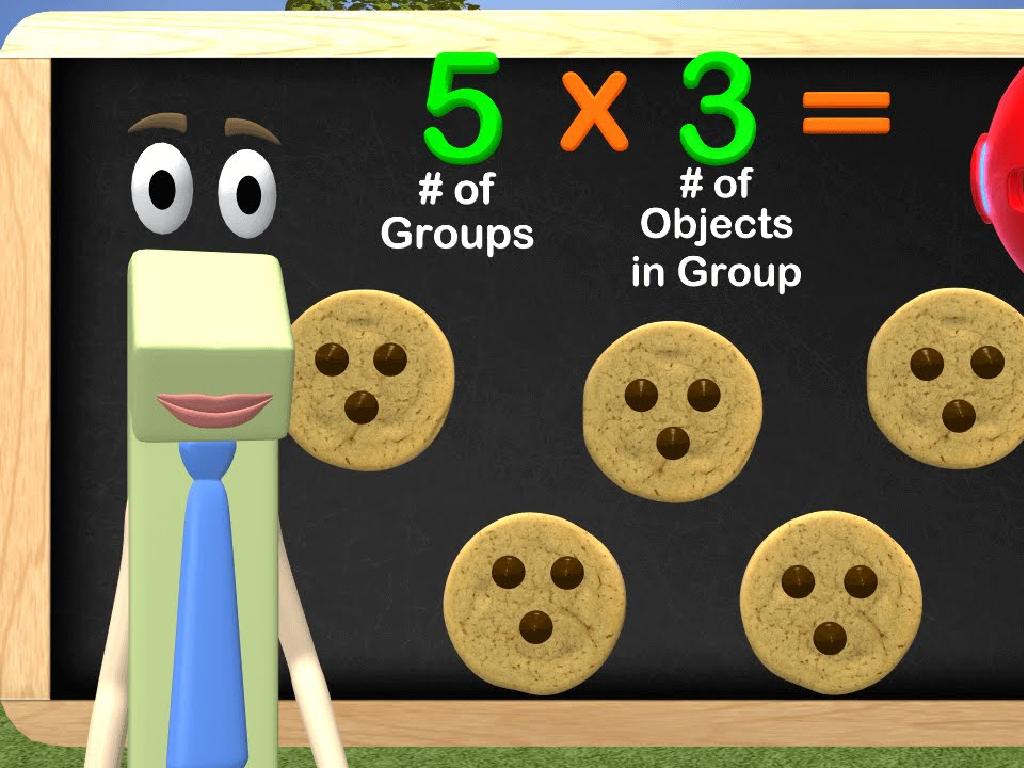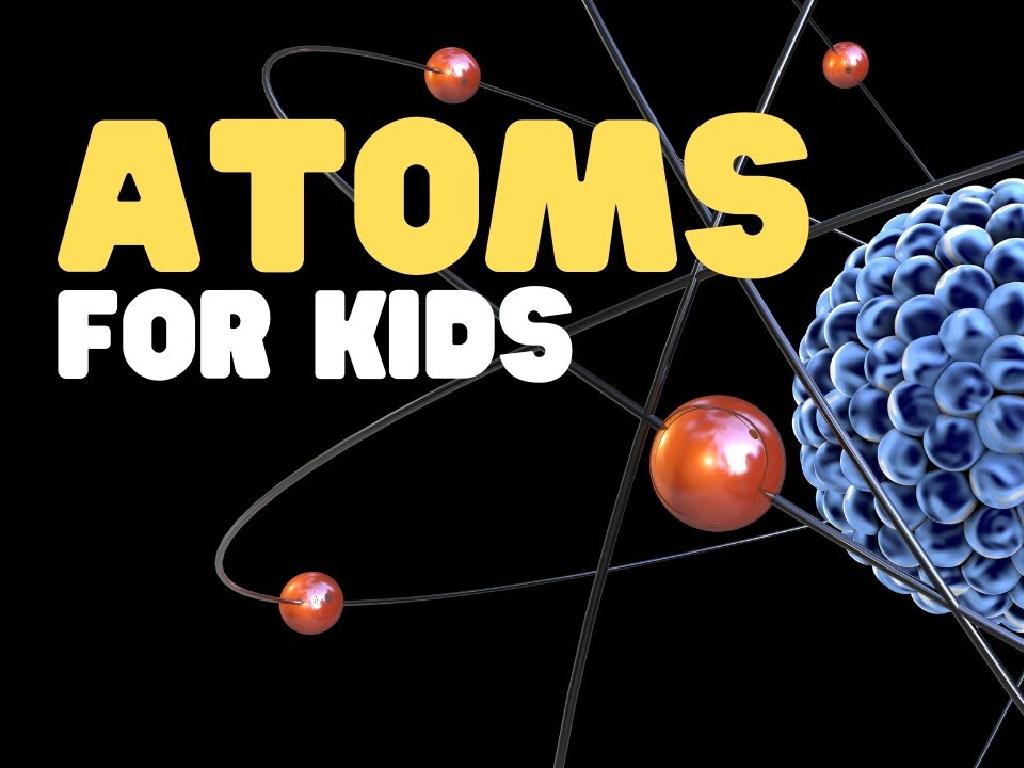Describe The Difference Between Related Words
Subject: Language arts
Grade: Fourth grade
Topic: Shades Of Meaning
Please LOG IN to download the presentation. Access is available to registered users only.
View More Content
Exploring Shades of Meaning
– Similar words, different strengths
– Words like ‘happy’, ‘joyful’, ‘elated’ have increasing intensity.
– Why shades of meaning matter
– It helps us express exactly what we feel or think.
– Choosing the best word
– The right word can make our sentences clearer and more vivid.
– Enhancing our writing
– Using varied vocabulary makes our stories and essays more interesting.
|
This slide introduces the concept of shades of meaning, emphasizing the importance of word choice in writing. Begin by explaining that while some words may seem similar, they can actually convey different levels of intensity or emotion. Use examples to illustrate how choosing a word with the right intensity can change the meaning of a sentence and make writing more precise and engaging. Encourage students to think of their own sets of words with varying intensities. Discuss how selecting the most fitting words can enhance their writing, making it more descriptive and powerful. Plan an activity where students can practice identifying and using words with different shades of meaning in their own writing.
Exploring Shades of Meaning
– Understanding related words
– Words that are similar but not identical
– ‘Happy’ vs. ‘cheerful’ vs. ‘joyful’
– ‘Happy’ is pleased, ‘cheerful’ is bright and positive, ‘joyful’ is full of joy
– Discuss similarities and differences
– Partner conversation activity
– Share your thoughts with a classmate
|
This slide introduces the concept of related words and their subtle differences, known as shades of meaning. Start by explaining that related words have similar meanings but are distinct in their usage and intensity. Use ‘happy’, ‘cheerful’, and ‘joyful’ as examples to illustrate the point. ‘Happy’ is a general feeling of pleasure, ‘cheerful’ implies a bright and positive disposition often shown outwardly, and ‘joyful’ suggests an intense or exuberant happiness. Encourage students to discuss with a partner how these words are similar and different, prompting them to use personal experiences or familiar contexts to explain their thoughts. This activity will help students understand nuances in word meanings and enhance their descriptive vocabulary.
Visualizing Shades of Meaning
– Shades of meaning as a thermometer
– Words can have different ‘temperatures’ based on their strength
– ‘Warmer’ and ‘cooler’ word examples
– ‘Warmer’ words show stronger feelings, ‘cooler’ words are less intense
– Place words on the word thermometer
– ‘Happy’, ‘cheerful’, ‘joyful’ comparison
– ‘Joyful’ is the warmest, ‘happy’ is cooler, ‘cheerful’ is in between
|
This slide introduces the concept of shades of meaning using the analogy of a thermometer to help students understand that words can have varying degrees of intensity. Explain that just like a thermometer measures temperature, we can ‘measure’ how strong a feeling a word expresses. Use ‘happy’, ‘cheerful’, and ‘joyful’ as examples to place on the word thermometer, with ‘joyful’ being the strongest emotion and ‘happy’ being the mildest. This visual representation helps students grasp that synonyms have different intensities and can be used for more precise expression in their writing and speaking.
Shades of Meaning in Action
– Words have different ‘shades’ of meaning
– One word can change a sentence’s feeling
– Example: ‘The girl felt happy/cheerful/joyful’
– ‘Happy’ is pleased, ‘cheerful’ is bright & positive, ‘joyful’ is full of joy
– Class Activity: Craft sentences with varied shades
– Use words like ‘glad’, ‘delighted’, ‘thrilled’ to express different levels of happiness
|
This slide introduces the concept of ‘shades of meaning’ to students, showing how synonyms can have subtle differences and affect the overall sentiment of a sentence. Use the example provided to illustrate how the intensity of emotion can change with different words. For the class activity, encourage students to think of a basic emotion and then write sentences using words that reflect varying intensities of that emotion. Guide them to use context to determine which word fits best. Activities can include creating a ‘feeling wheel’ with synonyms or a matching game with sentences and words of different shades. This will help them understand nuance in language and enhance their descriptive writing skills.
Choosing the Right Word
– Importance of word choice
– Enhances precision and interest
– Practice with word intensities
– Pick a base word and use synonyms with varying degrees of strength to change the sentence’s impact.
– Write sentences with variations
– Example: ‘happy’ – ‘glad’, ‘joyful’, ‘ecstatic’
|
Understanding the importance of word choice is crucial for effective communication. The right word can convey the exact emotion or description, making writing more engaging and accurate. During practice time, students will select a base word and then write three sentences using synonyms of that word that reflect different intensities. For instance, if the base word is ‘happy,’ they might write sentences using ‘glad,’ ‘joyful,’ and ‘ecstatic’ to show increasing levels of happiness. This exercise will help students understand shades of meaning and the subtle differences between similar words. Encourage creativity and discussion about how each word changes the feeling of the sentence.
Class Activity: Sorting Shades of Meaning
– Work in groups for word sorting
– Each group gets a set of word cards
– Arrange words by intensity
– From ‘mildest’ to ‘most intense’ expression
– Explain your sorting choices
– Why is ‘happy’ weaker than ‘ecstatic’?
|
This activity is designed to help students understand the nuances in the meanings of similar words. By arranging words from ‘weakest’ to ‘strongest’, they will explore the concept of shades of meaning. Provide each group with word cards that have related words of varying intensity. Guide them to think about the context in which each word would be appropriate. For example, ‘happy’ might be used for a good day at school, while ‘ecstatic’ could describe winning a competition. After the sorting, facilitate a discussion where each group explains their rationale. This will encourage critical thinking and a deeper understanding of word usage. Possible variations of the activity could include sorting words related to emotions, actions, or descriptive adjectives.
Review and Reflect: Shades of Meaning
– Recap on shades of meaning
We learned that similar words have subtle differences.
– Authors’ choice of words
To convey precise feelings or to make their writing more interesting.
– Personal lesson takeaways
Think about what new understanding you have now.
– Class discussion and reflection
|
This slide aims to consolidate the day’s learning about the nuances in vocabulary, known as shades of meaning. Start by asking students to summarize what they’ve learned about how similar words can have different intensities or connotations. Discuss why an author might choose one word over another, emphasizing the importance of precision in language to convey the right emotion or detail. Encourage students to share their personal takeaways, which could be a new word they liked, an appreciation for careful word choice, or how they might apply this knowledge to their own writing. Conclude with a class discussion, allowing students to reflect on and reinforce their understanding of the day’s lesson.
Homework Challenge: Exploring Shades of Meaning
– Find a paragraph from reading material
– Underline words with related meanings
– Words like ‘jog’, ‘run’, ‘sprint’ show different speeds
– Note down each word’s unique meaning
– ‘Whisper’, ‘talk’, ‘yell’ have increasing volumes
– Prepare to share your discoveries
|
This homework task is designed to help students understand that words with related meanings can have subtle differences, known as ‘shades of meaning’. By finding and underlining these words in a paragraph, students will practice identifying nuances in word choice that affect the overall meaning of a text. Encourage them to look for sets of words that are similar but have slight variations, like ‘shout’, ‘yell’, and ‘scream’, which all involve using one’s voice but at different volumes and intensities. In the next class, students will share their findings, fostering a discussion on how word choice can change perceptions and the importance of precise language.






